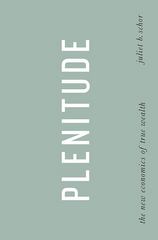My homework...
2. [Problem 4 on page 238] The cash-in-advanoe (CIA) framework. A popular alternative to the money in the utility function (MIU) framework is one in which money holdings directly facilitate transactions that is, provide a medium of exchange role, one of the basic functions of money that the MIU framework captures in only a shortcut form. Suppose that in any given time period, there are two \"types" of consumption goods, \"cash good\" and \"credit goods". Cash goods, denoted by c}, are goods whose purchase in period t requires money, while credit goods, denoted by c?, are goods whose purchase in period t does not require money (i.e., they can be bought on credit). The market nominal price of each type of good is identical, H. The representative consumer consumes both cash and credit goods. Specically, suppose the period-t utility fimction is u((::, &,n,), with n, denoting the individual's labor during period t. (Suppose that total hours available in any given time period is normalized to one, and the only possible uses of time are labor or leisure.) The consumers period-t budget constraint is: PIC\": + Psi-'12 + Ml, + PER: = thrr + MIl + 31].- Income is earned from labor supply (with in, denoting the market determined real wage in period t, which is taken as given by the individual), and, for simplicity, suppose there are no stock markets (hence oneperiod risk-less bonds and money markets are the only two asset markets). The consumer's bond and money holdings at the start of period t are B,_1 and Mal and at the end of period t are B, and M1. The individuals budget constraints for period t + 1, t + 2, . . . are identical to the above, with the time subscripts appropriately updated. As always, suppose the representative consumers subjective discount factor between any pair of consecutive time periods is ,6 6 (0,1). In addition to the budget constraint, in each time period the representative consumer also has a \"cash in advance\" constraint: RC: = Mg. The cash-inadvance (CIA) constraint captures the idea that in order to purchase some goods, a certain ammmt of money (or more generally, liquidity such as checkable deposits) has to be held. Fiom the standpoint of the analysis you will conduct, because the CIA is technically an inequality constraint, you may NOT substitute the CIA constraint into the budget constraint. That is, it must have its own lagrange multiplier. The consumers budget constraints and CIA constraints for period t + l, t + 2, are identical to the above, with the time subscripts appiopriately updated. (a) Set up an appropriate sequential Lagrangian from the perspective of the beginning of period t. Dene any new notation you introduce. (b) Based on the Lagrangian constructed in part (a), derive the rst-order conditions (FOCs) with respect to period t's choices, cf, cf, 11., 3;, and Mg. Dene any new notation you introduce. (c) Using the FOCs from above, derive the cash good/credit good optimality condition, which should have a nal form u1(c,',c,2,n.)/ug(o,1,cf,n) = f(i.). Note that it) is a function that depends only on the nominal interest rate. (d) Suppose now that the utility function is u(c,1,cf,n,) = ln(c,') + ln(q,2) + v(n,), in which 0014) is some unspecied flmction of labor. Taking into account the fact that the CIA constraint holds with equality at the optimal choice, derive, based on this utility function and your work above, the real money demand flmction: %l = . . . (e) Recall that in the MIU framework, the consumption-money optimality condition was: Marginal utility of real money balances _ it Marginal utility of consumption _ 1 + 1'. Compare, in terms of economics, this optimality condition to the optimality condition you obtained in part (c) above for the CIA framework by briey commenting on the similarities and differences between the results predicted by the two frameworks. Note: this does not mean restate in words the mathematics; rather, o'er two or three thoughts/critiques/etc. on how and why the two frameworks do or not capture the same ideas, how and why the two frameworks perhaps are or are not essentially identical to each other, and so on







